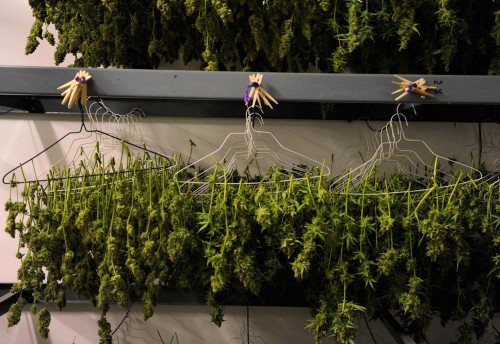In 2014, the first year of recreational marijuana sales in Colorado and Washington, adolescent cannabis use did not significantly change in either state, according to an important new federal survey released last week.
In fact, monthly adolescent cannabis use remained unchanged in 48 U.S. states in 2014 — and it declined in a few others, including former No. 1 state Rhode Island — according to the 2013-2014 report from the Substance Abuse and Mental Health Services Administration.
Cannabist Investigations
Special Report: 15 months in, edibles safety still concern for Colorado
Investigation: Denver Post, Cannabist tests find banned pesticides in pot products
‘Organic’ Debate: Marijuana industry explores legal alternatives for labeling
NEW: Get podcasts of The Cannabist Show.
Subscribe to our newsletter here.
Watch The Cannabist Show.
SAMHSA is the agency inside the U.S. Department of Health and Human Services whose mission is to “reduce the impact of substance abuse and mental illness on America’s communities,” and its previous survey for 2012-2013 had Colorado sitting in America’s No. 3 spot for teen marijuana use.
But given Colorado’s flat teen usage numbers, why is the state suddenly ranked No. 1 in the U.S. for teen marijuana use in the 2013-2014 survey — a statistic anti-legalization groups are already using as evidence that legalization leads to increased teen use?
It’s relatively simple, says a SAMHSA statistician who worked on this year’s report. While Colorado’s teen usage rates barely changed, the states that had more teen pot use in the previous survey changed even less — or saw significant decreases.
“Colorado’s rates are statistically the same between ’13 and ’14,” said Arthur Hughes, a statistician for the Washington D.C.-area SAMHSA.

Mind you, Colorado’s numbers aren’t exactly the same. In 2013-2014, 12.6 percent of 12- to 17-year-olds said they had used marijuana in the past month, up slightly from 11.2 percent in 2012-2013. But because this is a sample and not a census, Hughes said, a year-over-year uptick of 1.4 percent isn’t statistically significant because of the sampling variance.
“This is a standard approach that’s used in all major, federal surveys,” Hughes said.
One of the statistically significant changes in the new SAMHSA report did show adolescent pot use in Rhode Island, which formerly ranked No. 1 in the U.S. for teen use in the 2012-2013 data, drop from 13 to 10.7 percent. That is a statistically significant change, Hughes said.
Anti-marijuana group Project Sam jumped on the survey results with a media blast touting: “In Colorado especially, Big Marijuana has been allowed to run wild, and it appears that kids are paying the price more than in any other state in the country.”
What About the Kids?
High times at universities: U.S. college students’ daily pot use at 35-year high, edging out tobacco
New study: Marijuana study on male teens finds chronic use not linked to later issues
But Colorado’s top doctor fails to see any news in the survey’s latest results. Dr. Larry Wolk directs the Colorado Department of Public Health and Environment, and he echoed Hughes’ interpretation of the new data — that there was no significant year-over-year change in Colorado’s teen use numbers — and also added that the state’s teen use numbers were high even before recreational cannabis was legalized in late-2012.
“Colorado was within the range of being No. 1 even prior to legalization,” Wolk told The Cannabist. “We’ve always had a high use rate among youth and adults … It’s something we’ve had to contend with, whether or not marijuana is legal. So that’s not news. It’s easy to get misled by numbers if you don’t understand what’s behind those numbers.”
Colorado is hardly embracing its high adolescent usage, Wolk said.
“We’re obviously concerned about whether or not this is an early indicator of a concerning trend — and that’s why we want to stay vigilant on the prevention strategies we’re using to keep youths from using marijuana.”
Among the prevention strategies Wolk mentioned: Not allowing mainstream advertising or public displays from cannabis businesses, high taxes on pot products and public education campaigns on legal marijuana — including the “Good to Know” campaign, which won CDPHE a Cannabist Award last week in the Public Education category.
